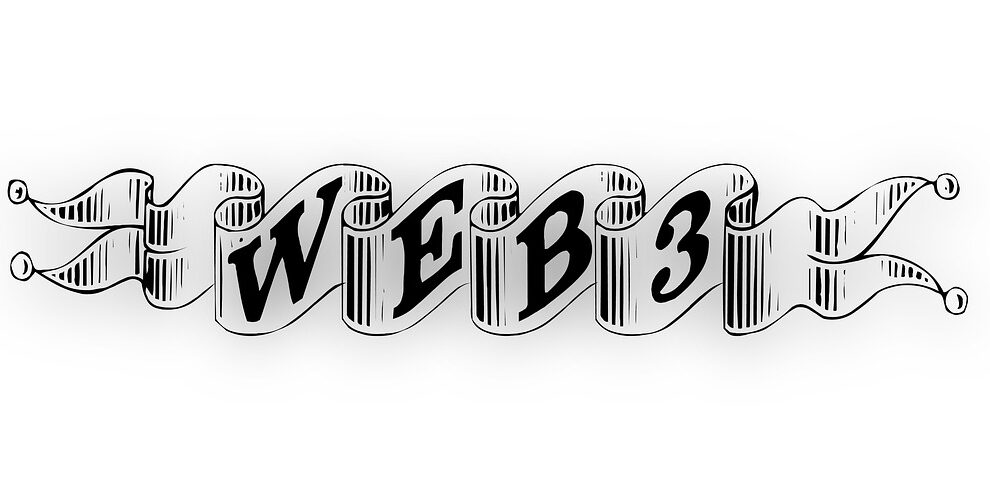Web3 refers to the third generation of the internet that is being developed with a focus on decentralization, privacy, and user control. It is based on blockchain technology and aims to create a more secure, transparent, and equitable online ecosystem. Businesses need to understand and leverage Web3 because it has the potential to revolutionize the way they interact with customers, store and manage data, and conduct transactions.
In this article, we will discuss the following Web3 growth marketing strategies that businesses can use to stay ahead of the curve and capitalize on the opportunities presented by this emerging technology:
- Building a Web3-friendly website and online presence
- Leveraging blockchain-based advertising platforms and reward systems
- Offering Web3-based payment options and incentives
- Creating decentralized applications (dApps) that solve real-world problems
- Collaborating with Web3 startups and communities to tap into new markets and audiences.
By adopting these strategies, businesses can not only increase their visibility and reach but also enhance their brand reputation, customer trust, and revenue potential in the Web3 ecosystem.
The Basics of Web3
Web3, also known as the decentralized web or the blockchain web, is the next iteration of the internet. Unlike the current Web 2.0, which is centralized and controlled by a few tech giants, Web3 is decentralized and empowers individuals and communities with more control over their data, identity, and transactions.
At the heart of Web3 is blockchain technology, a distributed ledger that records and verifies transactions without the need for intermediaries such as banks or governments. Blockchain ensures security, transparency, and immutability of data, making it ideal for applications that require trust and accountability.
Decentralized applications (dApps) are another key component of Web3. dApps are open-source software programs that run on a blockchain network and enable peer-to-peer interactions without intermediaries. dApps can range from simple games to complex financial systems, and they offer users greater privacy, security, and ownership of their data.
Smart contracts are another critical feature of Web3. Smart contracts are self-executing programs that automatically enforce the rules and conditions of an agreement between parties. They eliminate the need for intermediaries and ensure the reliability and efficiency of transactions.
Web3 is a game-changer for businesses because it offers them the opportunity to create new business models, tap into new markets, and build more trust and loyalty with their customers. With Web3, businesses can leverage blockchain to secure and manage their data, create decentralized applications that solve real-world problems, and offer Web3-based payment options that are faster, cheaper, and more secure than traditional methods. Additionally, Web3 empowers users with more control over their data and privacy, which can enhance customer trust and loyalty. Overall, Web3 offers a more transparent, efficient, and equitable online ecosystem that businesses can leverage to stay ahead of the competition.
Web3 Growth Marketing Strategies
- Tokenization and incentivization: Businesses can leverage Web3 to create their own digital tokens and incentivize customer behavior by rewarding them with tokens. For example, the online marketplace OpenSea rewards users with its native token, $OPEN, for referring new users to the platform. This incentivizes users to bring in more customers and creates a network effect that benefits the entire ecosystem. Tokenization can also be used to create loyalty programs, incentivize purchases, and offer discounts to customers.
- Decentralized apps (dApps): Businesses can build decentralized apps (dApps) that leverage blockchain to create new forms of interaction and value exchange between businesses and customers. For example, Nike’s CryptoKicks dApp allows customers to buy, sell, and trade limited-edition sneakers on a blockchain-based marketplace, creating a new revenue stream and a community of sneaker enthusiasts. Similarly, the music streaming platform Audius uses blockchain to enable artists to directly monetize their content and engage with fans, creating a more equitable and transparent music industry.
- Smart contract automation: Smart contracts can be used to automate and streamline processes, reducing friction in customer interactions. For example, the insurance company Lemonade uses smart contracts to automatically process claims and payouts, reducing the need for human intervention and creating a more efficient and reliable customer experience. Similarly, the ride-hailing service Arcade City uses smart contracts to facilitate peer-to-peer ride-sharing, eliminating the need for intermediaries and reducing costs for both drivers and passengers.
- Social media on Web3: Social media platforms built on Web3 offer new opportunities for businesses to engage with customers and promote their brand. For example, the social media platform Steemit rewards users with its native token, STEEM, for creating and curating content, creating a self-sustaining ecosystem of content creators and consumers. Similarly, the blockchain-based social network Minds allows users to monetize their content and engage with a community that values privacy, free speech, and decentralization.
Overall, these strategies offer businesses new ways to leverage Web3 for growth, innovation, and customer engagement. By adopting Web3 technologies and principles, businesses can tap into new markets, build more trust and loyalty with their customers, and create a more equitable and transparent online ecosystem.
The Future of Web3
The future of Web3 is exciting and full of possibilities. Here are a few trends and developments that are shaping the future of Web3:
- Web3 interoperability: As Web3 grows and becomes more diverse, interoperability will become increasingly important. Interoperability refers to the ability of different blockchain networks and dApps to communicate and exchange value with each other. Web3 standards such as Ethereum’s ERC-20 and ERC-721 tokens are already making it easier for different blockchain networks to interact, and projects such as Polkadot and Cosmos are building infrastructure to enable cross-chain communication.
- Web3 scaling solutions: As more users and applications join the Web3 ecosystem, scaling solutions will become essential to ensure that blockchain networks can handle the load. Projects such as Ethereum 2.0 and Layer-2 solutions like Optimism and Arbitrum are working on solutions to increase the throughput and reduce the cost of transactions on the Ethereum network. Other blockchain networks such as Solana and Avalanche are also exploring new approaches to scaling.
- Web3 privacy and security: As the importance of data privacy and security continues to grow, Web3 will offer new solutions that prioritize user control and ownership of data. Projects such as Zcash and Monero are working on privacy-preserving blockchain technologies that enable anonymous transactions, while solutions like IPFS and Filecoin are building decentralized storage networks that offer more secure and resilient data storage.
- Web3 governance: As Web3 becomes more decentralized, governance will become increasingly important to ensure the sustainability and fairness of the ecosystem. Projects such as Aragon and DAOstack are building infrastructure to enable decentralized autonomous organizations (DAOs) that can make decisions and allocate resources without relying on centralized authorities. Similarly, projects such as Uniswap and Aave are using decentralized governance to give users a voice in the development and management of their protocols.
Overall, Web3 represents a new frontier for innovation, collaboration, and value creation. As businesses and individuals continue to embrace the potential of Web3, we can expect to see new forms of social and economic organization, new models of governance and decision-making, and new opportunities for growth and prosperity.
Conclusion
In summary, Web3 is a new paradigm for the internet that emphasizes decentralization, transparency, and user control. Web3 technologies such as blockchain, decentralized apps, smart contracts, and digital tokens offer businesses new opportunities for growth, innovation, and customer engagement. To stay ahead of the game, businesses need to adopt Web3 growth marketing strategies such as tokenization and incentivization, building dApps, using smart contract automation, and exploring social media on Web3. By embracing Web3, businesses can tap into new markets, build more trust and loyalty with their customers, and create a more equitable and transparent online ecosystem. We encourage readers to explore Web3 further and start experimenting with these strategies in their own businesses. The future of Web3 is full of possibilities, and by staying ahead of the curve, businesses can position themselves for success in the years to come.





